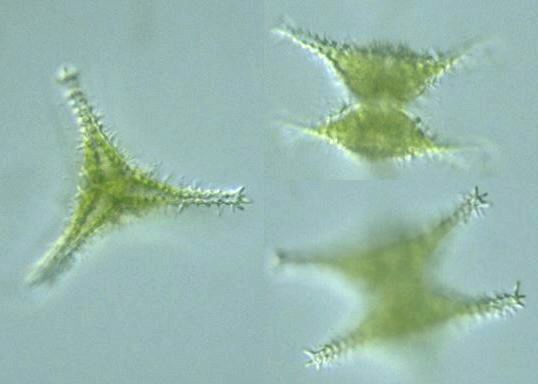Common Name: Alligator Weed
Scientific Name: Alternanthera philaxeroides
Description: Emergent, Aggressive mat forming perennial (every year), has a white flower,
Reproduction: Spreads from seed of plant fragments
Problems Caused: Impedes navigation and displaces native vegetation
Prevention:Laws that make it ilegal to prevent or transport in Texas
photohttp://greenup-tulsa.com/images/alligator_weed.JPG
Common Name: Hydrilla
Scientific Name: Hydrilla verticuillata
Description: Perennial, grows more than one inch per day
Reproduction: Spreads through tubers, turions, stolons, and fragments. No seeds
Problems Caused: Displaces native vegetation, Impedes navigation. Slow water flow, jam against bridges and dams and causes flooding. Mats cover over water, wont allow light in.
Prevention: Prohibited because it causes so many problems.
photo:http://wric.ucdavis.edu/information/aquatic/images/hydrilla_1.jpg
Common Name: Eurasian Watermilfoil
Scientific Name: Myriophyllum spicatum
Description: Submerged, Stems are red when actively growing, grows perennially, was brought to the U.S. in the 1950s.
Reproduction: Spreads by seeds, fragments, and stolents
Problems Caused: Impedes navigation, displaces native vegetation and is spread by boats, trailers, and birds
Prevention: Prohibited because so many problems.
photo:http://www.nps.gov/plants/alien/fact/img/mysp1.jpg
Common Name: Giant Salvinia
Scientific Name: Salvinia molesta
Description: Free floating, aquatic fern, dense mats, root hairs on leaves, resemble "egg beaters". In Australia, known to grow 3 ft above the surface of a lake.
Reproduction: Spreads rapidly by buds
Problems Caused: Reduces oxygen, negatively effects water quality habitat, it is almost impossible to eradicate.Causes flooding and clogs pipes. Blocks sunlight and prevents oxygen.
Prevention: Prohibited because of problems in Australia and South Africa
photo:http://www.clr.pdx.edu/images/GiantSalvinia1.jpg
Common Name: Water Hyacinth
Scientific Name: Elchhornia crassipes
Description: Free floating plants with violet flowers. It is one of the fastest growing plants known. Brought into U.S. during the late 1800s
Reproduction: Reproduces by daughter plants and forms thousands of seeds
Problems Caused: Uptakes nutrients in the water and releases H ions which acidify the water. Reduces oxygen levels
Prevention: Herbicide
photo:http://aquaplant.tamu.edu/files/2010/06/water_hyacinth_index.jpg

Common Name: Water Lettuce
Scientific Name: Pistia stratiotes
Description: Free floating, perennial, rosette of gray-green leaves. Creates large mats and resembles a floating open head of lettuce
Reproduction: daughter plants
Problems Caused: Large mats affect habitat and impedes navigation
Prevention: Against Texas laws to possess or transport. Can be removed physically by raking, by insects, or by pesticides.
Photo:https://blogger.googleusercontent.com/img/b/R29vZ2xl/AVvXsEioOllBvHamzPjjTplM-MMPzatX9hXpXw_wKq88PBavWJnbY3eTPFbjIHtAdGigHBxEp8wcNxDN_wFRZGEALnwWvYWD2p0o-YVphpCNTMFbluy49nvu6Na4MCz8Jmts1Efs0IYdpXkbed28/s1600/Water+Lettuce-2.jpg
Common Name:Purple Loosestrife
Scientific Name: Lythrum salicaria
Description: Emergent, invasive wetland, brought to Eastern U.S. 200 years ago. Added to weland for their fusia colored flowers.
Reproduction: Each plant can produce 2-3 million seeds.
Problems Caused: Clogs irrigation canals, in all 50 states except Florida. Replaces native vegetation
Prevention: There are several different beetles that have been brought in to eat away at the plant
Photo:http://sites.duke.edu/writing20_12_f2010/files/2010/09/purple-loosestrife-flowers.jpg












